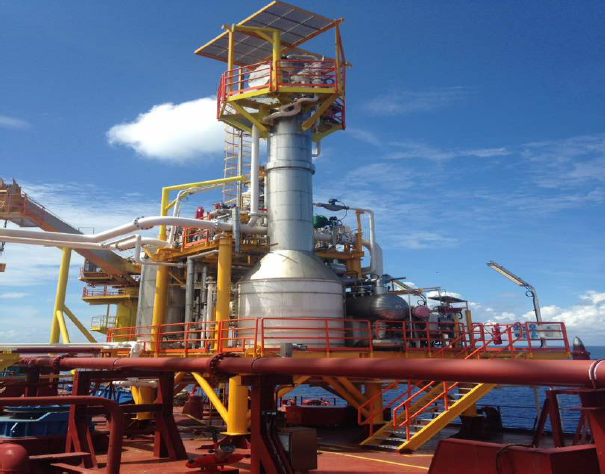Low Pressure Condensate Recovery System (LP-CRS)

- None or minimal rotating equipment resulting to high availability, easy operation and low maintenance.
- LP-CRS comes together with hydrate inhibition and anti-freeze agent (MEG) which is recovered in the process. Improved crude quality and reduce wax deposition for fields facing wax issues.
- Whilst increasing revenue with incremental crude production that would otherwise be flared, the system also reduces greenhouse gas emissions as much as 30%.
Sharmilee Muraale, Business Development Manager, sha@ngltech.com
‘A compact, self-contained flare/vent gas emission reduction system that recovers oil condensate’
LP-CRS is NGLTech's proprietary echo-friendly process solution for recovering and stabilizing valuable heavier molecules from the flare gases and enhancing the total crude oil production for and simultaneously reducing the flare gases and carbon foot print. Developed in 2015, the LP-CRS unit is currently arguably the only system in the world that is able to extract valuable hydrocarbon condensates from very low-pressure gas, including flare gas, in a compact, self-contained unit without the need for complex rotating equipment.
This technology utilizes an effective evaporative cooling system coupled with Joule-Thompson effect and is boosted by an improved and innovative turbo-expanding.
The benefit of the LP CRS system includes:
- Increased stabilized crude production ranging from an incremental production of 7 to 15% depending on the production rate and composition;
- The extraction of the C5+ components from the associated gas stream reduces CO2 emissions by:
- Shrinkage of actual gas volumes being flared due to the extraction of C4+ components; and
- Leaning the gas to the flare due to the extraction of the heavier ends from the associated gas stream.
Due to the combined effect of the above, a significant reduction of greenhouse emissions is seen due to flaring in the range of 20% to 30%. The system has minimal moving parts and easily operable thus providing high system availability and maintainability.
